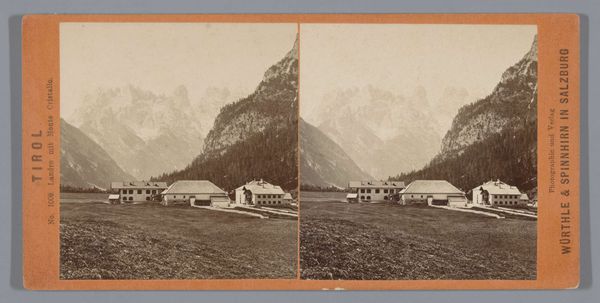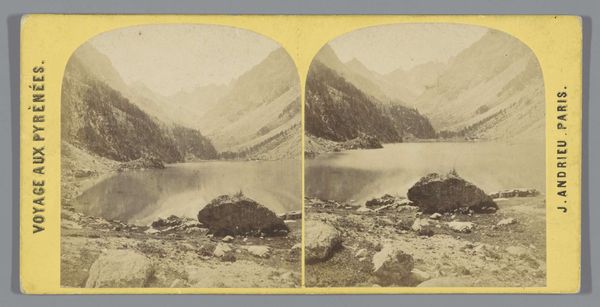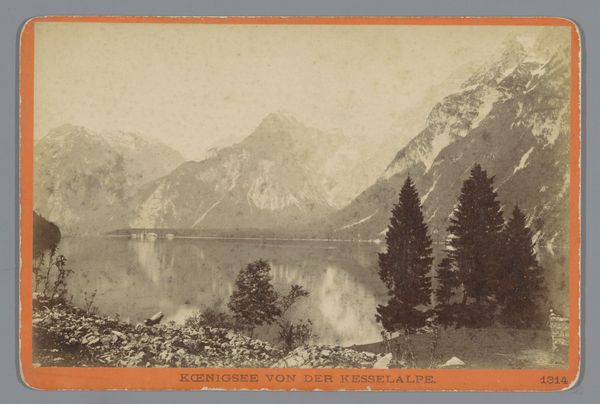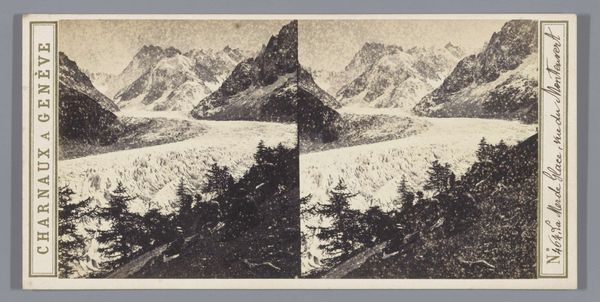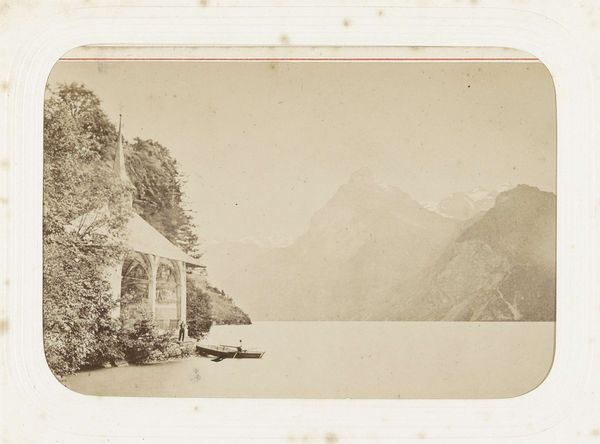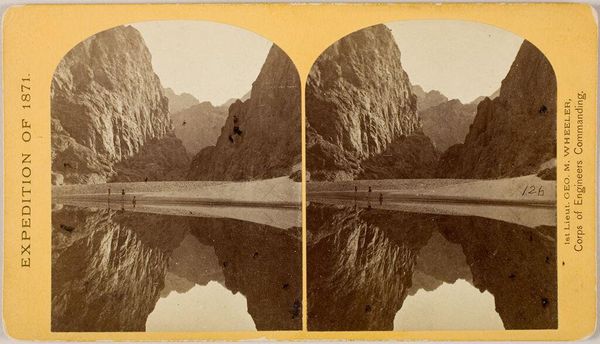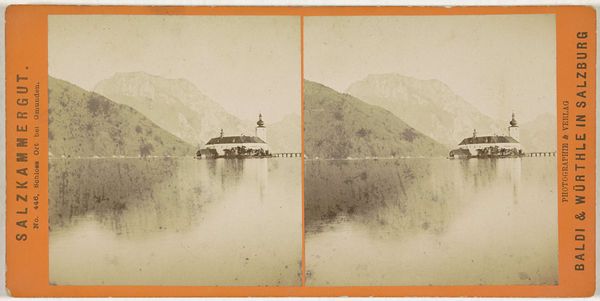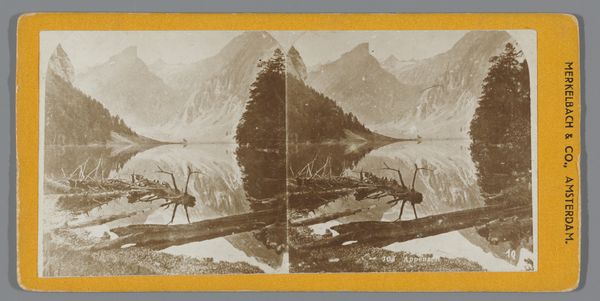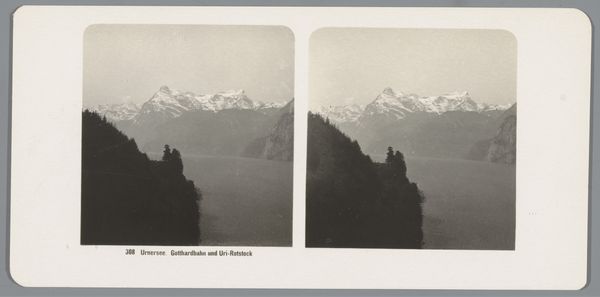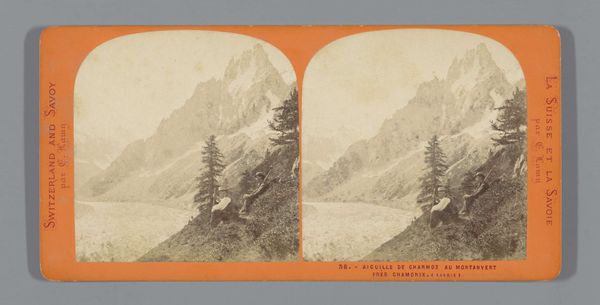
Bedevaartkapel de Sint-Bartholomeüskerk aan de Köningssee en de Watzmann 1881 - 1892
0:00
0:00
photography, albumen-print
#
lake
#
landscape
#
photography
#
mountain
#
albumen-print
#
realism
Dimensions: height 88 mm, width 178 mm
Copyright: Rijks Museum: Open Domain
Curator: This albumen print, taken between 1881 and 1892, presents a serene view of the pilgrimage chapel, St. Bartholomew's Church, on the Königssee, set against the dramatic backdrop of the Watzmann mountain. It was captured by the photography firm Würthle & Spinnhirn. Editor: It has this very melancholic, dreamy quality about it. The monochrome tones lend a timeless feel and you can almost hear the silence in this image. I am interested in how they got their supplies over to this area - especially materials to construct this beautiful, if somewhat lonely, church. Curator: That feeling is definitely intentional. Images like this were immensely popular with tourists visiting the area, romanticizing Bavaria as a sort of untouched paradise. These stereo views allowed viewers to transport themselves, from their parlors, to the Bavarian Alps. Consider how this type of picture played a role in creating and catering to the growing tourism industry. Editor: And fueling the material conditions of those dreams! Albumen prints are beautiful, but also labour intensive. The glass plate negatives, the egg whites required to coat the paper... who profited from these landscape images and how did that echo down into the landscape itself? How did making these idealized vistas actually change the realities for workers and materials? Curator: That is an important lens to use, thinking about the physical labor, resources, and commercial interests involved in producing and disseminating these idyllic scenes, absolutely. I suppose it served as a powerful form of propaganda. Editor: Exactly. Looking at this through the frame of tourism infrastructure and resource extraction shifts our perspective. The picturesque aesthetic relies on those often invisible processes. This compels us to acknowledge both the beauty captured, and the often-overlooked social dimensions and production realities of making these kinds of images available to consumers, near and far. Curator: Thank you! I will reflect on these commercial conditions as they allowed the creation and distribution of imagery of popular destinations. It complicates a simple view. Editor: Absolutely. By paying attention to the materials and labor, we see how something apparently straightforward contains complex dynamics of economy, labor and image making.
Comments
No comments
Be the first to comment and join the conversation on the ultimate creative platform.
